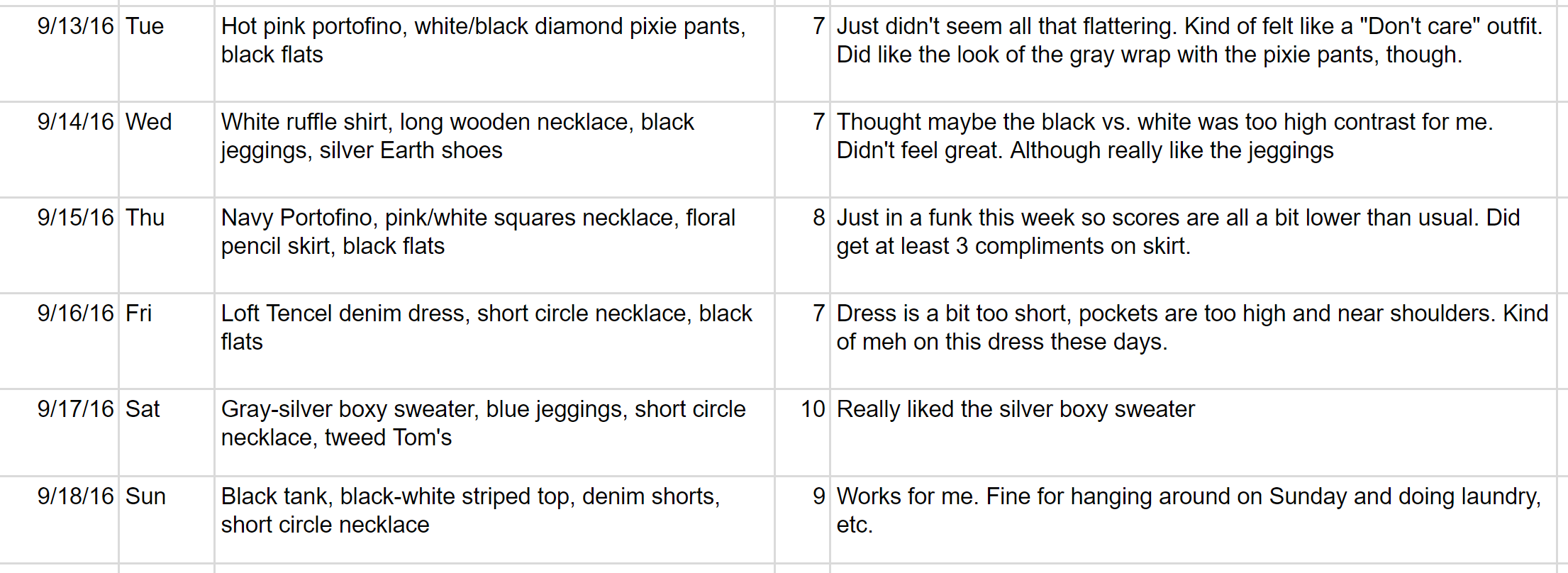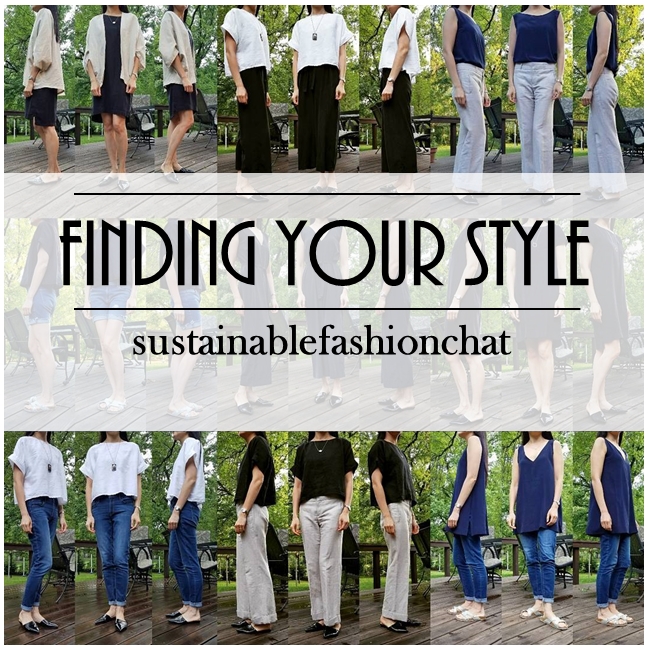So there are tons of posts on this topic and I’ve read many of them. The idea of a functional closet, full of well-loved pieces that all go together, enabling a person to get dressed in a flash with no effort is seductive and enticing. After trying to get there for several years, I wondered if it was also a pipe dream, but within the past 6 months or so, I think I’ve actually gotten there, and there were a few things I learned / tried that I haven’t read about anywhere else.
Most advice starts with emptying your closet, going through the pieces one by one and making a few piles: love it, toss it, not sure, etc. There’s also a lot of up-front thinking and planning — what do you spend your time doing, what is your desired style, etc.? For some reason, these approaches just didn’t work for me. I need to feel my way through things, at least with clothes. I had a really hard time trying to decide things up-front. After all, if I’d had all that figured out, why was I in the position of having a bunch of clothes that left me feeling meh?
So here are the things I did and learned. Maybe you’re like me and this approach will be helpful if others have not worked out.
- One of the most helpful things I did was to keep a daily style journal. It was nothing fancy, just a google worksheet with a few columns: the date, the day of the week, what I wore, how I felt about what I wore on a 10 point scale, and a place for comments. Here’s an excerpt:

- The other thing that was really helpful was keeping a running list of the items I wore and a tally of how many times they were worn. I’ve been calling this a #progressivecapsule and I’m still doing it today because I find it enlightening to see which items get worn the most. It doesn’t mean I’ll get rid of items that aren’t worn as often, but I do consider whether the smaller role they play justifies a place in my closet or not.
Just doing these two things for a few months can be extremely helpful. You’ll see which outfits make you feel great and which don’t. You’ll start seeing patterns of why things don’t feel great, whether it’s certain items of clothing, or certain combinations of items, or certain materials / silhouettes / colors, etc.
I created a couple of worksheets that you can download here and here, but honestly, I found google docs the best place for this since I could access it from anywhere.
From doing this exercise, here were the things I learned:
- Keep listening for your inner compass. Try not to be too swayed by what other people comment on, whether it’s positive or negative. In fact, I sometimes think compliments can steer us completely in the wrong direction. People often compliment on what’s unusual for you vs. what really looks good on you. And even if something does look good on you, if it doesn’t make you feel good, don’t second guess yourself. Keep referring to that journal and be really honest about how you feel. I would always get compliments when I wore bright colors, even though I never felt myself in them. That led me to buy items in bright colors since I figured that’s what I looked good in. Via my outfit journal, I finally realized I never felt myself in those colors, and I’ve gradually phased them out of my wardrobe.
- Wear to experiment. I didn’t do well with envisioning an outfit on myself and having it actually work out. I was much better with actually getting clothes and wearing them. So the whole “identify gaps in your wardrobe” didn’t work for me because 9 times out of 10, when I filled what I thought was a gap, I found that the piece didn’t work for me at all, nor did it go with my other clothes they way I thought it would. That’s why I pretty much exclusively shop online now, so I can take my time, trying an item on for longer periods of time and with various other items. I also tend to buy used on eBay, especially when experimenting with a new type of item, because then I can wear it and resell it if needed without losing too much money.
- “Investing” is not a great concept when it comes to clothing. Unless you’re buying designer pieces that might actually appreciate in value over time, your clothes aren’t really an investment. You’re paying money to have something to wear. If you pay $5 and wear it 5 times, that’s as valuable as a $500 item that you wear 500 times (and believe me, there aren’t actually many pieces of clothing you’ll wear 500 times.) And if you pay $5 and wear it 50 or 100 times, that’s awesome. All I’m saying is, I spent some time sucked into the idea that I had to buy ‘investment’ pieces that were ‘classic’ that I’d wear forever. But I was in the midst of, and probably still am, evolving my sense of what I like and that isn’t conducive to wearing many pieces for years and years (maybe I’ll get better at this as I figure it out.) I found it better to take the approach of experimentation and listening to how I felt.
- It can be ok to have different versions of the same thing. In my quest to be as streamlined as possible, I would think I needed to trim things down to, say, only one pair of black boots. But the thing is, it can be really hard for the same pair of black boots to go well with every outfit and occasion in which you might want black boots! At this point, I have three pairs — a higher heel pair for dressing up, a pair of Chelsea’s for medium-dress occasions, and a short zippered pair for more casual times. I’m not saying everyone needs three pairs of black boots. But I wear a lot of black and it makes sense in my wardrobe. I would not classify any one of those pairs as redundant.
- Ignore all the must-have lists. This is actually a point I’ve seen made in other articles and comments, but I wanted to include it anyway. Must-have lists have caused many of my failed purchases. It turns out, white button downs, most blazers, khaki trenchcoats and heeled pumps don’t work for me at all. Yet they appear on almost every must-have list out there. Now I know!
- Get out the sewing machine! One of the most enabling things I’ve done in the past 6 months is get my sewing machine out. I’ve sewn up a good 8-10 staple pieces in my wardrobe and also altered a few (some for fit, some for silhouette) and have been able to customize my closet in just the ways I want.
So those are my tips. Anybody have any others they’d like to share?
